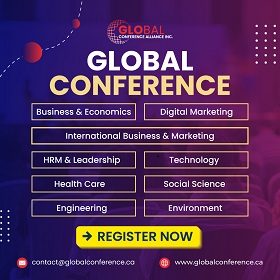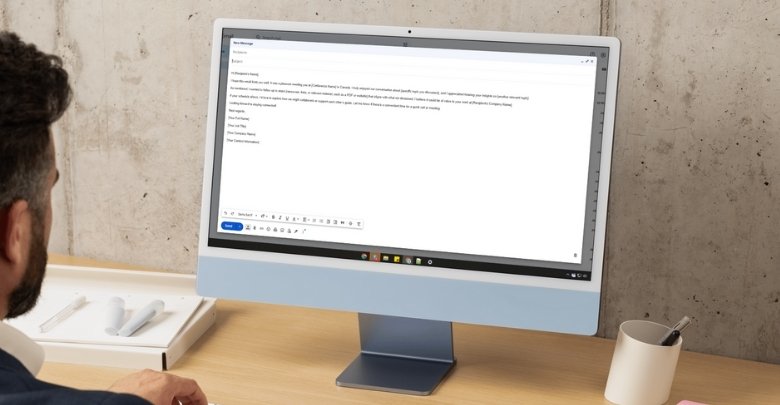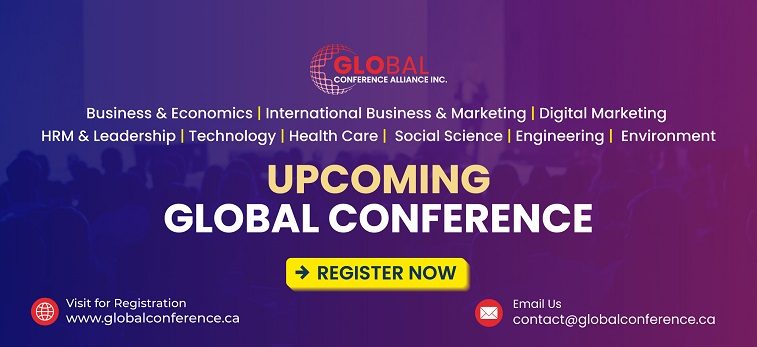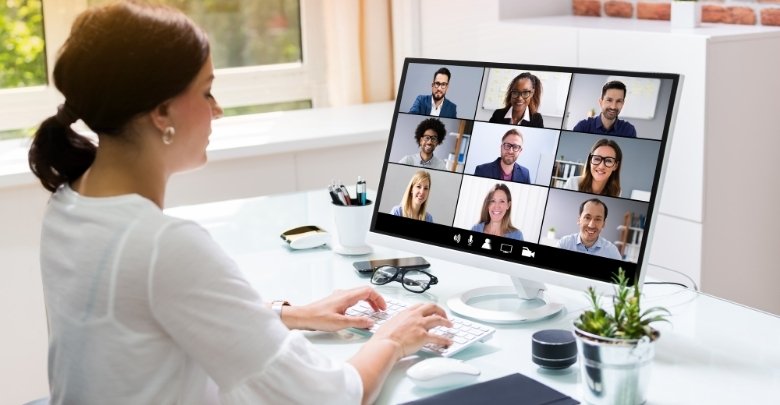It is easy to gain new insights and expand your professional network when you attend a business conference in Canada. But the real value often comes after the event ends, during the crucial follow-up phase. So, what are the best practices for following up after a business conference in Canada?
Follow up after a business conference in Canada by sending personalized emails, connecting on LinkedIn, and showing genuine interest in future collaborations. Timely, thoughtful actions strengthen connections and promote long-term professional relationships.
Ready to make the most of your conference experience? Keep reading to discover the best practices that will ensure your efforts lead to valuable outcomes and lasting partnerships.
Best Practices for Following up After a Business Conference in Canada
Meeting new people, exchanging ideas, and learning from industry leaders are all advantages of attending a business conference in Canada. However, the true value often lies in the follow-up after the event. Here’s how to ensure you maximize the value of your post-conference connections.
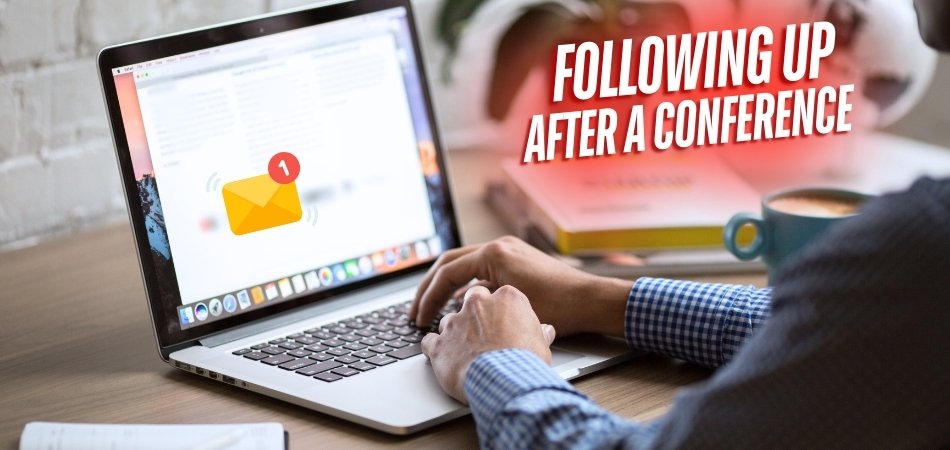
Send Timely Follow-Up Emails
A follow-up email within 24–48 hours is crucial for maintaining the connection. A quick response shows initiative and keeps the conversation fresh in their minds. Be sure to mention something specific you discussed at the conference to help them recall your interaction. A clear subject line like “Great meeting you at (conference name)!” will also improve the likelihood of your email being opened.
Personalize Your Message
Personalization is key in any follow-up. Reference specific points from your conversation, such as a topic they were passionate about or a project they mentioned. This small detail shows that you listened and cared about continuing the discussion. A personalized email helps create a more genuine and lasting connection.
Make Use of Social Media for Continued Engagement
Keep in touch with conference attendees by connecting on LinkedIn after they attend. It’s an informal yet professional way to stay on their radar without bombarding them with emails. When sending a LinkedIn request, include a friendly note that recalls your interaction at the event, so they know it’s not just a generic connection.
Be Clear About Your Intentions
In your follow-up, make sure your intentions are clear. Whether you want to set up a meeting, discuss potential collaborations, or simply keep in touch, your communication should be clear. This will help your contacts know what to expect from an interaction and how to respond. If you’re offering something—like a relevant resource or connection—make sure it aligns with their interests.
Don’t Overwhelm Them
Make sure not to overwhelm your new contacts with too many emails or check-ins. Respect their time and avoid being too persistent. Give them space to respond, and if you haven’t heard back after a couple of weeks, it’s okay to send a polite reminder. Balance is crucial for maintaining a positive relationship.
Follow Up With a Call or Meeting Request
After a few exchanges, consider suggesting a phone call or an in-person meeting if the connection feels promising. A short, focused conversation can deepen the connection and move the relationship forward. Be clear about your availability and propose a few dates and times that work for you to make scheduling easier.
Keep the Conversation Going with Valuable Content
Sharing useful content like articles, case studies, or industry news that is relevant to your contacts can keep the conversation alive. It shows that you are thinking of them and adds value to the relationship. It doesn’t always have to be about your direct interests—offering value in the form of useful resources helps solidify the connection.
Following up after a business conference in Canada is just as important as attending the event itself. By sending personalized, timely emails and staying engaged through social media, you can turn short conversations into valuable, long-term professional relationships. The key is to stay clear, respectful, and thoughtful in your approach.
How to Write a Memorable Follow-Up Email?
A follow-up after a business conference or meeting is essential for maintaining professional relationships. A professionally written follow-up email can leave a lasting impression, showing your gratitude, professionalism, and desire to continue building a relationship. Here’s how to write an email that stands out and keeps the conversation alive.
Start with A Warm, Personal Greeting
Begin your email with a friendly greeting, addressing the recipient by name. Using a personalized greeting sets a positive tone for the message and makes it feel less formal and more conversational. Be sure to make the recipient feel valued from the start.
Mention Specific Details from Your Interaction
To make your email memorable, refer to a specific conversation or topic you discussed, such as opportunities to apply to present at a business conference in Canada. Mention something unique or interesting that stood out during your meeting, whether it’s a shared interest or an idea they shared. Referencing details like this in your follow-up email demonstrates attentiveness and keeps the conversation relevant and engaging.
Express Gratitude for the Meeting or Conversation
Take a moment to thank the person for their time and insights. Acknowledge the value of their contribution to the discussion, and highlight how it impacted you. Gratitude encourages goodwill and strengthens the foundation of a positive, ongoing professional relationship.
Be Clear About Your Next Steps
Let the person know what you would like to do next, whether it’s scheduling a meeting, collaborating on a project, or sharing additional resources. Being clear about your intentions will prevent any confusion and set the tone for the next phase of your relationship. A call to action helps guide the recipient to the next step.
Keep It Brief and Focused
Avoid writing lengthy emails. Keep your message concise and to the point while covering all essential details. Busy professionals appreciate brevity, so respect their time by staying focused on the purpose of your follow-up.
Writing a memorable follow-up email doesn’t have to be complicated. By personalizing your message, expressing gratitude, and being clear about the next steps, you’ll leave a lasting impression. Take these tips to prepare an email that promotes genuine professional connections.
Templates for Writing a Follow-Up Email
Sample 1: Professional Follow-Up Email After a Business Conference
Subject: Great Connecting at [Conference Name]
Hi [Recipient’s Name],
I hope this email finds you well. It was a pleasure meeting you at [Conference Name] in Canada. I truly enjoyed our conversation about [specific topic you discussed], and I appreciated hearing your insights on [another relevant topic].
As mentioned, I wanted to follow up to share [resources, links, or relevant material, such as a PDF or website] that aligns with what we discussed. I believe it could be of value to your work at [Recipient’s Company Name].
If your schedule allows, I’d love to explore how we might collaborate or support each other’s goals. Let me know if there’s a convenient time for a quick call or meeting.
Looking forward to staying connected!
Best regards,
[Your Full Name]
[Your Job Title]
[Your Company Name]
[Your Contact Information]
Sample 2: Friendly and Casual Follow-Up Email
Subject: Following Up After [Conference Name]
Hi [Recipient’s Name],
I hope you had a productive and enjoyable time at [Conference Name]! It was great chatting with you about [specific topic], and I found your perspective on [another topic] really inspiring.
I wanted to touch base and keep the conversation going. Attached is [resource, article, or link], which we discussed—I think you might find it interesting.
If you’re open to it, I’d love to connect further to learn more about [their business focus] and share how we at [Your Company Name] could add value to your efforts. Let me know if a quick chat works for you!
Thanks again, and I’m excited to stay in touch.
Warm regards,
[Your First Name]
[Your LinkedIn Profile or Website Link]
[Your Contact Information]
Best Time to Follow Up With New Contacts After Business Conference
Timing your follow-up after meeting new contacts at a business event can be a delicate balance. Reach out too soon, and you might seem overzealous; wait too long, and the connection could fade. Knowing the right timing will help ensure your follow-up strengthens your relationship. Here are some key tips for following up at the ideal time.
Reach Out Within 24–48 Hours
The best time to send your initial follow-up is within 24 to 48 hours of meeting someone. This is when your conversation is still fresh in both of your minds. A prompt follow-up shows professionalism and interest without feeling too rushed, making a strong first impression.
Avoid Following Up During the Event
Although it might seem natural to follow up right after a conference or event, it’s better to wait a bit. Reaching out during the event might feel too sudden and could come across as overly eager. Taking a couple of days to reflect on your interaction allows you to prepare a thoughtful message.
Be Mindful of Their Schedule
Consider the recipient’s possible schedule before reaching out. If they were a speaker or had a busy role during the event, they might be swamped with messages. In these cases, waiting a bit longer before following up ensures they have the time and space to respond meaningfully.
Send Emails During Business Hours
For maximum impact, send your follow-up emails during business hours, ideally in the morning. Emails sent early in the day are more likely to be seen and responded to. Avoid sending follow-ups late in the evening or over weekends when your message may get lost in a crowded inbox.
Space Out a Second Follow-Up
If you don’t hear back after your first message, give it about a week before following up again. This gives the person time to respond without feeling overwhelmed. Keep your second message polite and friendly, reinforcing your interest in staying connected.
The timing of your follow-up can significantly impact your professional relationship. By following these simple guidelines, your messages will come across as thoughtful, respectful, and engaging, paving the way for lasting connections.
Why Following Up After a Business Conference is So Important?
After attending a business conference, the initial excitement and networking opportunities may feel like the end of the journey. However, the real potential for building strong, lasting professional relationships lies in what happens next, following up. Here’s why following up after a business conference is essential to your continued success.
Strengthens the Connections You’ve Made
Following up allows you to reinforce the connections you’ve made during the conference. It’s a chance to show your interest in the conversation and keep the dialogue going. Besides, reflecting on what to bring to a business conference in Vancouver can help you prepare for these follow-ups by ensuring you share relevant materials or insights gained during the event. This shared experience encourages deeper engagement and solidifies the connection.
Demonstrates Professionalism
Sending a thoughtful follow-up email shows that you are professional and organized. It conveys that you are not only good at networking but also value your contacts enough to take the time to reach out afterwards. This professionalism can leave a lasting impression on your new connections and reflect positively on your reputation.
Creates Opportunities for Future Collaboration
One of the most important reasons for following up is to create opportunities for future collaborations. Whether you are interested in partnering on a project or want to explore ways to support each other’s work, following up ensures that the possibility remains alive. Without it, a great initial connection could fade away without any tangible outcomes.
Keeps You Top of Mind
People you meet at conferences are often busy and may meet dozens of other professionals. A follow-up serves as a gentle reminder of who you are and what you discussed. By keeping your name fresh in their mind, you increase your chances of being contacted when future opportunities arise.
Following up after a business conference is more than a simple courtesy—it’s a strategic step toward nurturing meaningful professional relationships. By reaching out thoughtfully and on time, you open the door for future collaboration and lasting connections.
Avoiding Common Mistakes in Post-Conference Follow-Ups
After attending a business conference, following up is crucial to solidifying the connections you’ve made. However, it’s easy to make mistakes that can hinder the effectiveness of your outreach. Here are some common missteps to avoid when following up post-conference.
- Sending Generic Emails: Personalization matters! A generic, one-size-fits-all email feels impersonal and can be easily overlooked. Instead, refer to something specific from your conversation to make your message stand out.
- Being Too Pushy: While enthusiasm is great, being overly persistent can make your new connection uncomfortable. Allow them space to respond, and avoid sending follow-up emails too soon or too often.
- Not Offering Value: A follow-up should be more than just a thank-you note. Add value by sharing a relevant article, offering to connect them with someone, or suggesting ways to collaborate.
- Failing to Be Clear About Next Steps: Always be direct about what you’re hoping for in the next phase. Whether it’s scheduling a meeting, discussing opportunities, or sharing resources, clarity helps move the conversation forward.
- Overloading the Message with Information: Keep your email concise. Avoid overwhelming the recipient with lengthy paragraphs or too much detail. Busy professionals appreciate brevity, so focus on the key points.
- Ignoring Timing: Timing is key! Following up too soon may feel rushed, while waiting too long can make the connection seem less genuine. Aim to follow up within 24-48 hours to keep the conversation fresh.
Avoiding these common mistakes will help you send follow-ups that are engaging, professional, and effective. A thoughtful, timely follow-up can turn your brief conference meeting into a lasting and meaningful connection.
Frequently Asked Questions (FAQs)
Following up after a business conference in Canada raises a variety of questions that can help you make the most of your efforts. Here are some commonly asked questions, along with practical answers, to help you navigate the follow-up process effectively.
Should I Follow up With Every Person I Meet at A Conference?
No, you don’t need to follow up with everyone. Focus on the contacts you had meaningful conversations with or those who align with your professional goals. Quality connections are more impactful than quantity, so prioritize thoughtful, relevant follow-ups.
Is It Appropriate to Send a Follow-Up Email if I Didn’t Exchange Business Cards?
Yes! If you remember their name or organization, look them up on LinkedIn or the conference attendee list. Mention where you met and reference your conversation to jog their memory. A polite and professional message can still make a great impression.
How Can I Stand out In a Follow-Up Email?
To stand out, personalize your message by referencing a specific part of your conversation. Share something valuable, like an article or resource related to their interests. A thoughtful, adapted approach makes your follow-up memorable and builds stronger connections.
Is It Okay to Follow up Multiple Times if I Don’t Get a Response?
Yes, but space out your attempts. If you don’t get a reply after the first email, wait at least a week before sending a polite reminder. Avoid being overly persistent, as this can harm the connection rather than strengthen it.
Can I Ask for Feedback About My Conference Presentation in A Follow-Up?
Absolutely. If you presented at the event, a follow-up email is an excellent opportunity to request feedback. Frame your request politely, expressing genuine interest in their thoughts, which can also open doors to further conversations or opportunities.
Final Words
Building meaningful connections doesn’t end when the conference does—it’s just the beginning. When it comes to answering the question, “What are the best practices for following up after a business conference in Canada?” the key lies in being proactive and authentic. A timely thank-you note or email can set the tone for a fruitful professional relationship, showing you value the interaction.
Remember, consistency is the glue of networking. Following up thoughtfully, sharing valuable resources, or scheduling a quick coffee chat can make you memorable while demonstrating genuine interest in collaboration. These small actions often lead to big opportunities in the future.
So, as you close the chapter on your latest conference, don’t let the momentum fade. Implement these best practices, and watch your professional relationships grow stronger and more impactful.

